Poultry Research
Research Areas
Use of Algae Products with Poultry
As omega-3 fatty acids continue to gain positive attention for their implications in brain development and heart health, there is an increase in public demand for omega-3 enriched products. Microalgae, an alternative to fish oil and flaxseed as a source of omega-3 fatty acids, can be incorporated into poultry diets to produce a beneficial fatty acid profile including increased of docosahexaenoic acid (22:6, DHA). As a polyunsaturated fatty acid, DHA is highly susceptible to oxidation. Over time, an increase in fatty acid oxidation may result in an undesirable flavor or odor of foods.
Use of Alternative Feed Ingredients in Poultry Diets
Typically poultry diets are based on corn and soybean meal. A variety of different alternative feed ingredients are available for use in poultry diets. Several of these different ingredients have been, and continue to be, studied for use in poultry diets.
Use of Dried Distillers Grains with Solubles in Poultry Diets
There has been a steady increase in the demand for ethanol as part of the government's plan to reduce the U.S. dependency on foreign oil. Ethanol is produced by fermentation of corn, with dried distillers grains with solubles (DDGS) being the main by-product. With the increasing demand for ethanol, there is an increasing supplying of DDGS. Research has looked at the use of DDGS in poultry diets. At the University of Kentucky we are looking at the use of DDGS in diets for laying hens.
Use of Enzymes in Poultry Diets
Several feed ingredients contain what are referred to as "anti-nutritional factors," which are components of a feedstuff that interfere with the digestion of the ingredient and use of the nutrients they contain. Feed enzymes are now available to counter the negative effects of such anti-nutritional factors.
Gut Health & Poultry Nutrition
Examining the effect of dietary electrolyte balance, energy source and length of feeding of nitrogen-free diets on ileal endogenous amino acid losses in broilers. Energy source and not dietary electrolyte balance influenced ileal endogenous amino acid losses in 21 d-old broilers fed nitrogen-free diets.
Use of Heritage Breeds in Alternative Poultry Production Systems
Many small-scale poultry producers, especially those raising poultry on pasture, are looking for alternatives to the commercial strains currently available. Heritage breeds are an option that should be investigated.
Use of Organic Trace Minerals in Poultry Diets
Several minerals are required in minute amounts in the diet. These are referred to as trace minerals. Organic forms of trace minerals are found to be more biologically available than inorganic forms currently used in industry.
Programmed Nutrition for Poultry Production
Effects of Programmed Nutrition feeding strategy on the production performance, egg quality, bone quality and liver mineral content of brown laying hens, and other research.
Use of Selenium Yeast & Natural Antioxidants in Poultry
Selenium is a required nutrient for poultry and plays an important role is protecting cells from damage. The level of selenium in the feedstuffs used in poultry diets vary depending where in the world they are grown. Grains from some parts of the U.S. can be deficient in selenium. As a result, most poultry feeds contain supplemental selenium. In the past selenium has been added to the feed in the form of sodium selenite. Recently an organic form has been developed - selenomethionine - which is produced from a particular strain of yeast grown on a medium high in selenium.
Use of Yeast Products in Poultry Diets
Mannan-oligosaccharides derived from Saccharomyses cerevisiae cell wall have been found to promote growth and enhance immune responses in food animals.
Facilities
Our newly built poultry research facility, comprised of two buildings, is located at the C. Oran Little Research Center, about 14 miles from UK's campus.
The first building (Layer/Breeder Building) has two parts with a feed room between them. The first part has five identical rooms with each room capable of housing 160 laying hens (two hens per cage) or 80 broiler breeding hens (one hen per cage) and 24 adult male chickens (individually housed). The environment within each room is individually controlled and could be used for both cold and heat stress research.
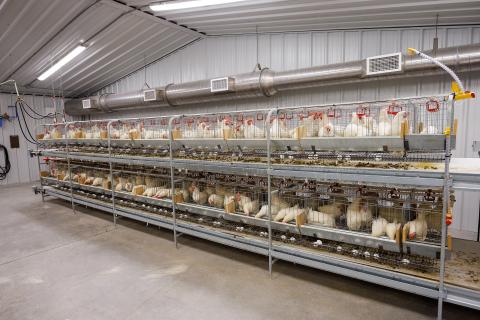
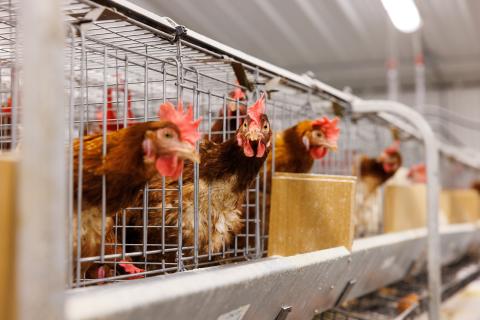
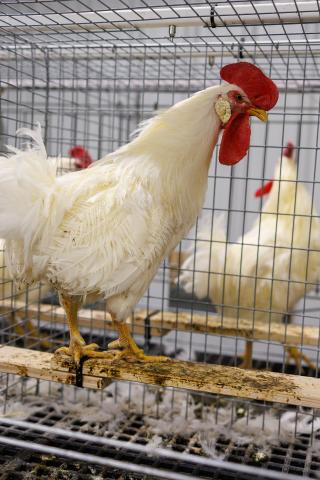
The second half of the layer/breeder building is used as a floor pen room with 48 pens (8 x 6 ft.), equipped with nest boxes as needed. Currently used for housing Heritage breeder flocks (Black Australorp, Rhode Island Red and Barred Plymouth Rock) to provide hatching eggs for incubators in the classroom program throughout the state.
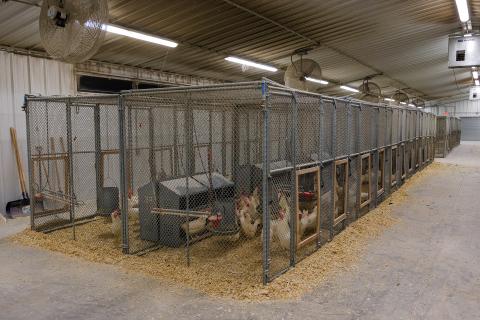
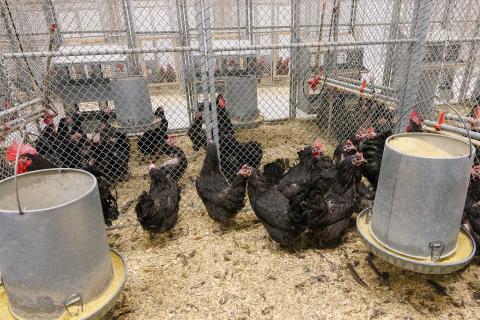
The second building (Nutrition Building) is divided into two halves with a feed room in between them. The first half of the building has three batteries consisting of a total of 324 pullet cages. This facility is capable of being used for different nutrition studies for pullets up to 16 weeks of age or broiler chickens up to 4 weeks of age.
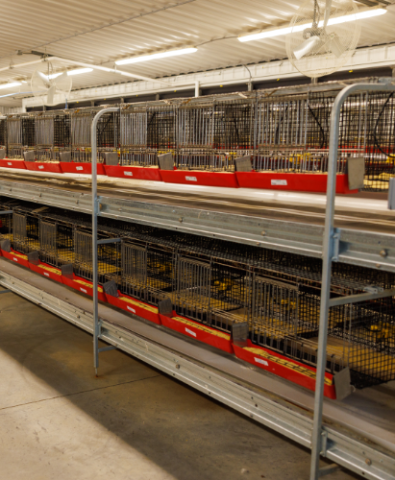
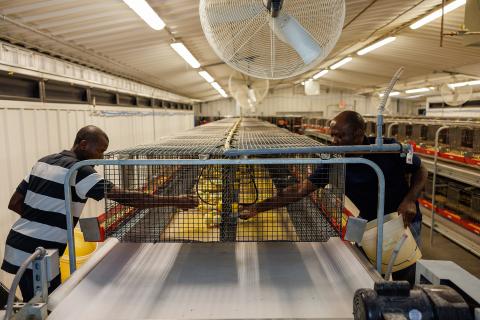
The second half of the nutrition building is the floor pen room with 80 6 x 6 x 6 ft. pens.
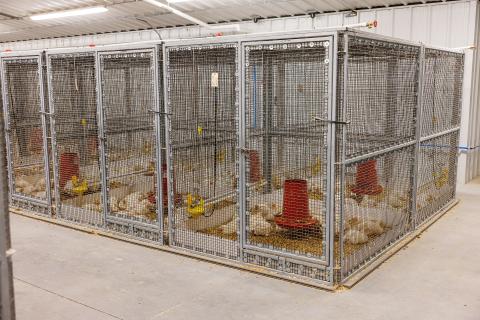
There are also several (up to 120 cages) moveable battery cages (Alternative Design) that can be moved into any of the environmental rooms for heat stress-related studies in broiler chickens.
In addition, broiler chicken studies can be conducted in the basement of our current building on campus. However, the basement facility will be replaced with a vivarium in the new Agricultural Research Building that is currently under construction (future home of our department; tentative move-in date of late fall 2026/early spring 2027). This new building would have two large rooms (BSL2) that would be dedicated to poultry research.
